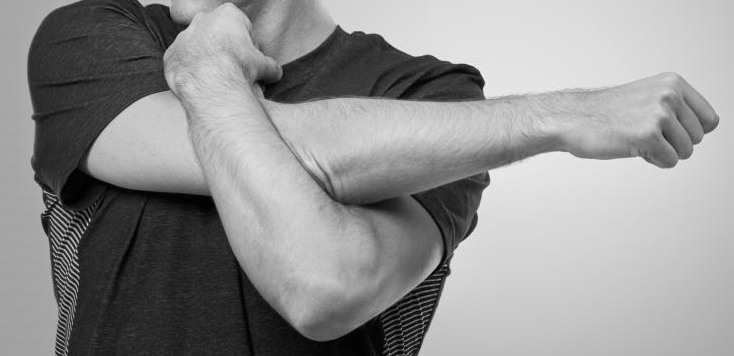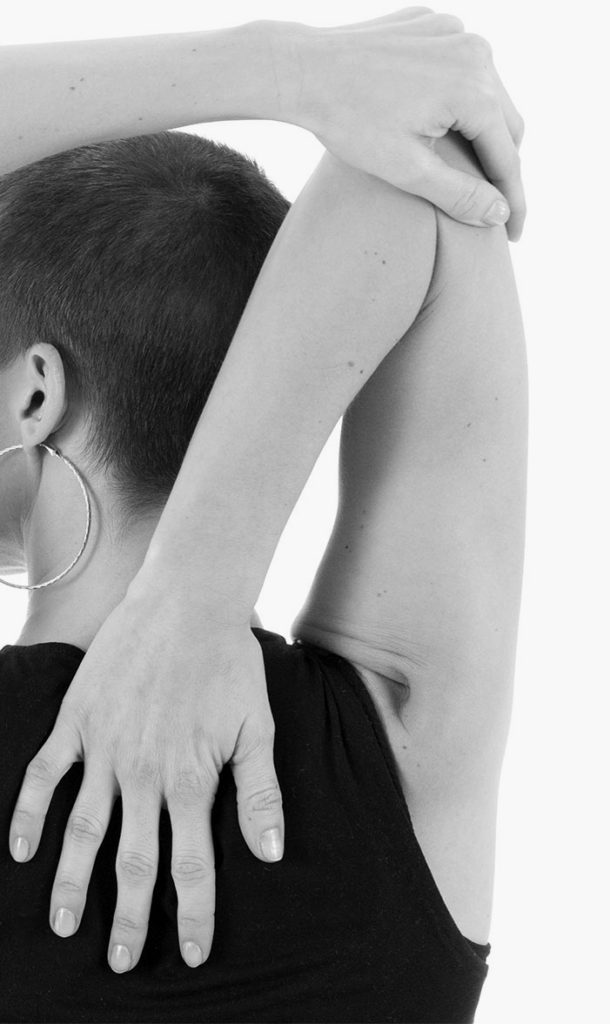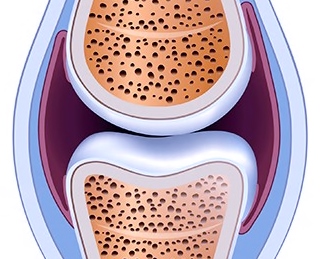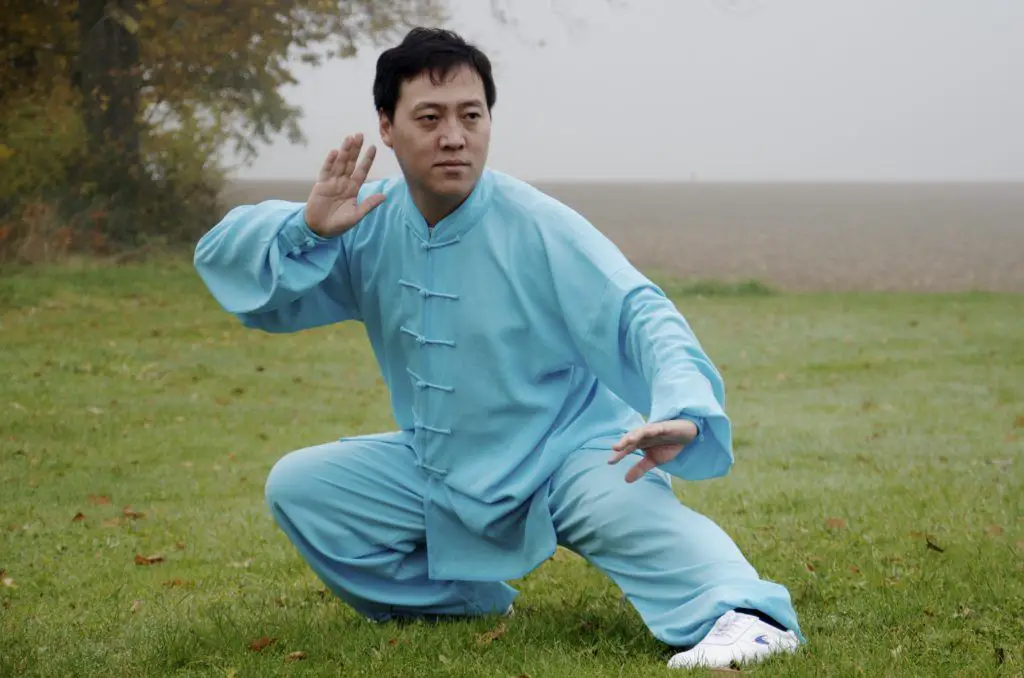There is an aspect of studying tai chi that is maddening and captivating all at the same time. The smallest of movements that seem so easy, actually take so much time to master and contain all the needed knowledge of tai chi. Something as simple as moving the arms, stepping, or even the tai chi stretching routines take months to get right.
You can see a short form on the first night of class and think “I can do that.” Two months later you are still working on memorizing the movements.
Smaller still, you can see a silk-reeling move like circling the arm and then get proper instruction at a workshop and learn how to propel the entire body from that one appendage.
Smaller still, you can do standing meditation (Zhan Zhuong), yes standing in one spot, and have the whole universe of internal energy light up inside of you after putting your time in.
So I shouldn’t have been surprised that during an open teaching portion of a workshop with Master Chen Bin that he devoted two full hours to the topic of tai chi stretching. Stretching! You read that right. The discussion wove between science, theory, western comparison, and ended with a surprising bonus for proper stretching: self-evaluation!
Tai chi stretching is the process of warming tendons and ligaments throughout the body in a specific sequence while using breathing techniques that expand into the belly and calm the nervous system. As a general rule, tai chi stretches are rotational movements not static holds like in western athletics.
I waited to write on this topic because it took a while to compile my notes from the seminar and research what Chen Bin had referenced. And well, it’s just stretching isn’t it? Two things have compelled me to write on the topic:
- Reading around the internet, it becomes obvious how injury-prone martial arts classes are while in our class we have not had an injured student – ever? I don’t think so because the rec center we practice in makes people fill out forms. Seldom enough to not remember it at the very least.
- I started training younger people in weight lifting recently and the stretching, injuries, and potential for injuries on display in the gym is just ridiculous. Conversely, the 16-year-old I am working with squats and deadllifts her weight. Does she think the tai chi stretches I make her do are weird? Yeah. She’s 16. But she isn’t arguing with the results.
If you a practitioner this information will be enlightening. Or, if you just want to become more flexible, learn how to get your day started, or heal, you are in for a real treat. I want you to take 5 minutes here and read how tai chi stretching is probably different from anything you have done in your life. More than that, some tai chi stretching exercises like bouncing, you probably were told not to do. When you are ready, I wrote a second article detailing exactly what to do and how to modify the set if you are a senior or beginner.
How is Tai Chi Stretching Different from Western Stretching?
Western and eastern stretching couldn’t be more different. Let’s begin by highlighting the distinction because we aren’t even talking about the same thing.
| Tai Chi Stretches | Western Stretches |
| Focuses on the joints | Focuses on the muscles |
| Incorporates the entire body | Isolates a specific muscle or body part |
| Is rotational | Is static (holds) |
| Works to elongate and slow the breath | Often holds the breath |
| Is a whole body event regardless of what you are going to do | Assumes you only have to stretch certain muscles to do certain activities. Let’s also add here that it assumes that YOU know which muscles are used in whatever you are going to do. A bit optimistic don’t you think? |
| Relaxes and contracts both antagonistic muscles (e.g. bicep and tricep) | Relaxes one antagonistic muscle and over-extends the other. Does not contract. |
Tai Chi Stretching vs. Western Stretching
Let’s use a couple examples here to make the distinction clear. How would a western athlete stretch their upper arm? They would probably straighten their elbow, pull their arm straight across their body and hold for a few counts.

Then maybe they would place their hand on their upper back, push the elbow back and hold.

Let’s highlight some obvious problems here:
- Blood flow is restricted.
- The arm is in a position it would never be in for any activity.
- The shoulder joint is strained.
- And the real weird thing, you never stretch the front muscle (the bicep in this case).
A tai chi stretching routine that included the arm would start by pushing up from the floor, using the body motion to cause the arm to circle, and would include full rotation of the shoulder, elbow, and wrist. Why? Because they’re part of your arm! And you are stretching the arm!!! Just kidding (sort of). I will also add that by generating centrifugal force with the body to cause the arm to circle, the muscles of the arm remain relaxed which increases blood flow.
The Science Behind a Good Tai Chi Stretching Routine

So imagine that you are starting from the floor and moving up to the top of your head. Rather than stretching each muscle along each bone, you are using those muscles to rotate the joints between the bones. With the toe on the floor you circle the ankle. With your legs together, you circle the knees clockwise by squatting the butt to your ankles and pushing back up. Circle the hips, arms, you get the picture.
So why are we doing this? Synovial fluid
Synovial fluid is found in the joints which is expressed into the cartilage and joint to reduce friction, absorb shocks, transport oxygen and nutrients into the joints, and move waste out.
Healthy Joints Need to Move
When a joint is at rest, cartilage absorbs some of the synovial fluid. When the joint is in use the synovial fluid is squeezed out of the cartilage, much like how water is wrung from a sponge. Consequently, joint use is essential to circulate the synovial fluid throughout the joint.
To “warm-up” properly means that we excrete the maximum amount of synovial fluid to not only protect our body parts but also to prep the areas for more work by transporting nutrients. In light of this, doesn’t it make the stretch-and-hold tactics of western stretching seem ineffective? Secondly, when people get injuries it is typically to a joint and not the long muscles. So why are we stretching the long muscles?
So how do we stretch our muscles then?
Muscles are stretched by warmth. Think of it as a relaxation from being warmed up that causes the stretched feeling. The warming up comes from using the muscle to rotate the joint.
A warm muscle is also an elongated muscle. Think about the posture we hold when we are cold versus lounging on a beach.

Incorporation of Breath into your Tai Chi Stretches
Chen Bin shared that getting older is a continual loss of breath and elongated breath. He gave an example of how a 20 year-old can bound up a flight of stairs but this becomes more difficult and then exhausting as we age. He explained that we can’t stop this process but we can slow it down.
We all have the natural tendency to take shorter and shallower breaths as our day wear on and also as we get older. The tai chi stretches are a perfect place to incorporate long, deep, belly breaths into each movement. And if you teach tai chi stretches for seniors, breathwork has to play a major role. For the rest of us, dramatic focus on breathing makes you feel invigorated by the end of the routine and like you are really ready to do something! Isn’t that why we are warming up and stretching in the first place.
If you want to become more adept at how you are breathing, here are 9 key tips.
Tai Chi Stretching as a Way to Self Evaluate
Chen Bin ended with an idea that completely blew my mind. He asked what we thought the purpose of tai chi stretching exercises was. You can imagine that we were left feeling pretty confused considering that we were rounding out our second hour talking about “why to stretch.”
The purpose of tai chi stretching exercises is to evaluate what you are capable of or what you should do that day. Each day or time you work out you do the exact same sequence of stretching movements beforehand. Toe to head or head to toe. Nine rotations of each joint, first counterclockwise, then clockwise. First left then right. Breathing deeply into the belly with each movement.
This gives you a sense of what “typical” is for you. Now imagine that today you complete your tai chi stretching routine and you feel tired: take it easy and keep your stances high. You feel bad: you might be getting sick. You feel an ache somewhere: choose activities like silk reeling to target it. You feel energized: go all out, maybe weapons forms today. You still feel cold: deep stances today to get your body temperature up.

We are all human and subject to day-to-day changes in our health, mood, and posture. The tai chi stretching routine gives us a chance to truly listen to our body and see how we can support it.
Again, if you need a routine, check out: Tai Chi Warm-up Set – When do we get to the “Good Stuff?”. The routine is pretty straight forward.
Are you looking specifically for tai chi morning stretches?
The information shared above is to be used throughout the day and specifically to get you in a great place to do the tai chi form. These stretches do work well in the morning as a general warm up and stretch to shake off the sleep. However, the morning offers us a very special window where mentally we are crossing from sleep to the waking state and our brain activity, breathing, and blood flow are all ramping up. There is a great qigong series of movements that not only serves as tai chi morning stretches but also wakes you, warms you and builds internal energy. The Good Morning – Good Evening Qigong Set is easy to learn and the most powerful set that I have found that can be learned via video.



